A thermal imager, otherwise known as a thermal imaging camera, allows you to measure or read the temperature of a surface without making contact. The functionality of thermal imagers is banked on thermal emissivity. All materials, at temperatures higher than 0Kelvin (Absolute Zero), have a thermal emissivity which is mainly in the form of infrared rays. It is this infrared emissivity that the thermal imager captures. The imager calculates the temperature based on the intensity of the infrared emissivity.
Thermal imagers have become very popular in the house inspection industry. They’ve offered a seamless and effective way of detecting any problems that a house might have. Thermal imagers are not a preserve of home inspectors only. You can also purchase one, and personally inspect your home to ensure it stays in perfect condition. Below are 10 important things you should know about thermal imagers before you purchase one.
1. Why Thermal Imagers Over Other Temperature Sensors?
Thermal imagers make it possible to measure temperature in a seamless and hassle-free manner. Measuring temperature with conventional sensors can be a little bit daunting some cases. The non-contact aspect of thermal imaged makes it easy to measure temperatures of moving, contaminated, or hazardous objects.
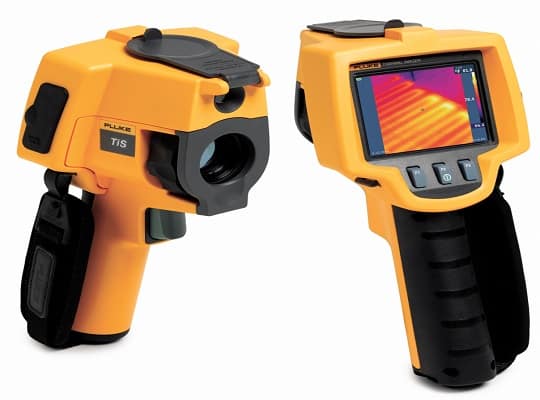
You can also easily read the temperature of objects that are at a distance. For instance, if you want to read the temperature of an object on the roof of your house, you would not have to climb up there. Thermal imagers also provide a sharp contrast of the temperature of the object being investigated and the surrounding areas. This is very crucial while inspecting your home for defects.
Conventional temperature sensors have to make contact with the object being investigated, and will, therefore, not be able to allow all these conveniences. For instance, if you were to measure the temperature of extremely hot components in a processing plant, you will need a non-contact method of measuring temperature. The thermal imagers become quite essential under such circumstances. You will conveniently measure temperatures without putting yourself or your equipment in any sort of danger.
2. What Makes a Great Thermal Imager?
There are various types or brands of thermal imagers on the market. It is important to understand the aspects of a great and effective thermal imager before you go purchasing one. Some critical considerations that you should make include the field of view, spectral response, temperature range, and response time. Other factors include ease of handling, type of surface being investigated, memory capacity, signal process, and type of mounting.
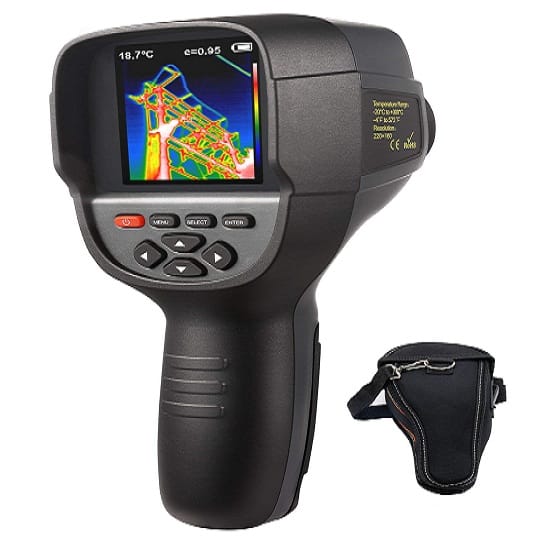
These factors determine how easy it use to use the camera, and how well it performs. The ideal imager should be able to provide high-resolution images, precise temperature readings, and quick response time. Thermal imagers come in different sizes and have different features. Some are more suitable in some situations than others. You should take time to explore the features of the imager, to ensure it can adequately cater for your requirements. Some of the discussions below are about the main factors that make a great thermal imager.
3. What is Thermal Imager Resolution and Why is it Important?
The resolution of a thermal imager is a measure of how precise it is while contrasting surfaces with different temperatures. As such, a thermal imager with a high resolution is able to detect slight temperature differences, which is very essential while inspecting a house for various problems. It allows you to detect small problems while at a great distance.
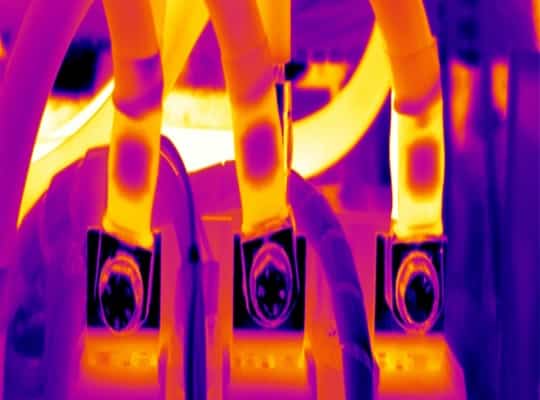
It is quite essential that you have a thermal imager with a good resolution, especially if you want to use it to inspect your house systems. Most of the components of the systems are often hidden behind walls or above ceilings. A highly precise thermal imager will ensure you do not miss any defect that might be there. High resolution and precision allow the imager to display some color contrast between objects with different temperatures even when the temperature difference is very subtle. This makes it easy for inspectors to analyze the imaged, and call out any abnormalities or defects.
4. What is the Field of View of a Thermal Imager, and Why Is It Important?
A thermal imagers field of view refers to the angle of vision that the device covers. This angle is determined by the optics of the device. It is important that the target fills the field of view perfectly, in order for the temperature measurement to be accurate. If you were to engage professional home inspectors, you’d notice that they show up with a couple of thermal imagers. They have to have the perfect angle of view for each of the targets they will encounter.
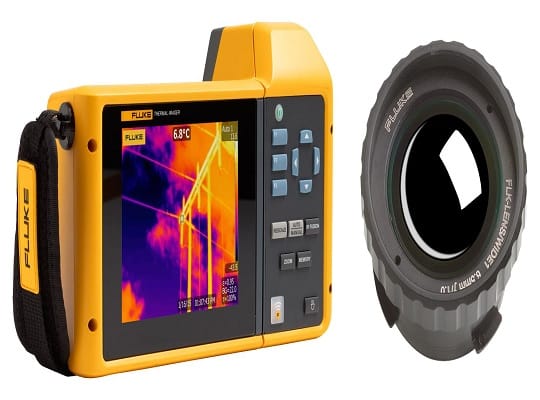
If you intend to purchase a thermal imager for personal use, you should go for one with a large field of view. In most instances, this field of view is adjustable. You will be able to perfectly image various targets around your home, and get accurate results.
5. What is Temperature Range and Why is it Important?
Temperature range has been mentioned above as one of the factors that should determine the suitability of a thermal imager. Temperature measurement requirements are very varied. While some inspectors will be dealing with low temperatures while inspecting a home, some will be dealing with very high temperatures while inspecting factory equipment.

As such, thermal imagers are made with a temperature range through which they can effectively read temperatures. Basically, there are thermal imagers that are designed to deal with low-temperature scenarios, and there are those designed to deal with high temperatures. While you will not know the exact temperatures of the area you are working on, you can certainly tell the expected temperature levels. You should, therefore, get a thermal imager whose temperature range accommodates the level of temperatures you expect, so as to get accurate measurements.
6. How Do You Use a Thermal Imager?
Using a thermal imager to read temperature is quite easy and straightforward. Note that there is a difference between reading the temperature of objects, and inspecting surfaces for defects. The temperature of the target object will be displayed on the imagers screen.

The screen also displays an image of the target object and the other objects around it. The image is, however, not like a photo. It is more like a heat map, where the various object can be seen because of their shape, but they have distinct colors depending on their temperature of emissivity. The colors depicted range along the wavelength spectrum.
Inspections involve deducing what the various images on the thermal imager depict. To be able to find defects from these temperature changes, one must have some level of expertise. As such, in as much as you can purchase the thermal imager and inspect your house yourself, it is probably best if you let a professional inspector do it if you don’t have expertise in that area.
7. Modern Thermal Imagers Have WiFi and Bluetooth
Modern thermal imagers come with WiFi and Bluetooth. Working with these devices cannot get any more exciting than that. These devices have internal storage capacity and will store the images or footage taken as digital files. These files can be easily transferred over a digital wireless network to other devices that are nearby or far away.
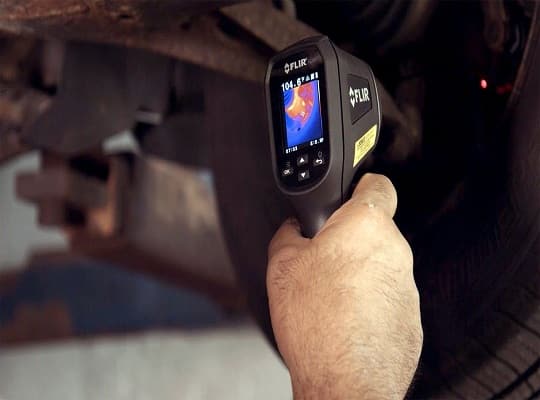
The joy about this is that professionals are able to easily consult with their peers. As mentioned earlier, the process of detecting flaws, breakages or faults with the systems in your house involves analyzing the heat maps displayed on the thermal imager’s screen. It is not a very straightforward process, and any inspector without much experience will need to consult from time to time.
The ability to send files from one device to another also comes in quite handy while inspectors are working on a large house. They can easily communicate about the condition of various parts of the house, while they are in different sections. This allows them to work faster and more effectively.
8. Get a Thermal Imager that Stores Files in Standard File Formats
We have explored the convenience of being able to send the images and footage from the camera to other devices through wireless networks. However, this is not possible if the files are not stored in a standard digital files format. They need to be stored in formats such as standard JPEG for the images and MPEG 4 for the footage. There some other appropriate formats available depending on which device you get.
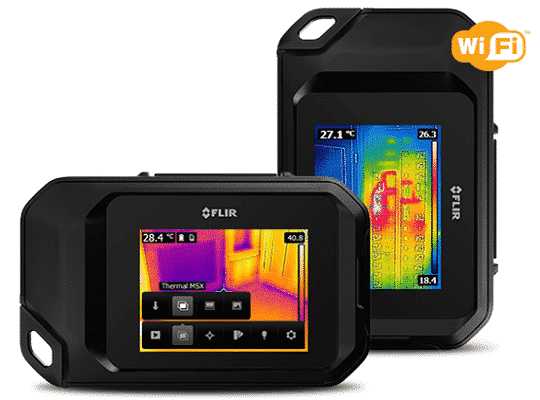
The bottom line, the files as they are stored in the camera, should be transferred and readable from a different device, say a laptop or a smartphone. Some cameras will store the files in formats that only they can read, or some that require special software to read. That might be a challenge especially if you need to share the files around. Standard file formats allow you to embed the files in emails and send them to customers or colleagues without altering them and losing crucial information in the process.
The thermal imager you get should at least have a USB port, even if it doesn’t support wireless connections so that the files can be transferred to a computer.
9. Ergonomics Are Important
We have outlined a couple of factors that make a great thermal imager. While the ergonomics of the thermal imager might be seen as a very trivial detail compared to the kind of work it is supposed to do, it is actually a very crucial aspect. The thermal imager needs to be light and easily portable. This is particularly important for professional inspectors, who might have to spend hours on end carrying out inspections.
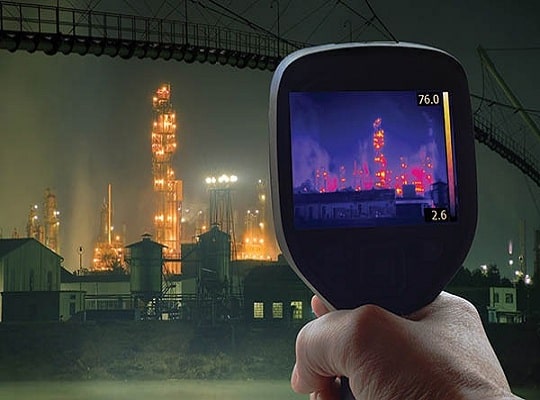
A light camera will ensure you do not have to strain when you have to use it for long hours. Some ideal thermal imagers have lenses that can tilt along a 120-degree axis. This allows the operator to be able to conveniently view the screen from different angles. The camera needs to have user-intuitive control methods as well. For instance, some cameras have a single button that is supposed to help you navigate through the various settings of the camera. That’s not very convenient. One with two or more buttons will make its operation a lot easier.
10. Reporting Software
After inspection with the thermal imaging camera, professional inspectors must prepare inspection reports that are then handed out to the owners of the building. Modern inspection cameras are quite advanced that they have reporting software that will allow you to create inspection reports right on the spot.

There is also a provision where, the files from the camera can be transferred to a mobile smart device, and you are able to prepare the reports right away. The software whether on the camera itself or on a smart device, is able to perform a wide range of tasks related to report writing. They will conduct custom radiometric calibrations, simple spot measurements, or even create a special data analysis structure using other software such as Excel and MatLab.
This aspects of analysis might not make so much sense to a person who just wants a thermal imaging camera for personal use. These are quite essential for any professional inspector though. They enable them to complete inspection reports quicker.
When you set out to purchase a thermal imaging camera, it is important that you have most of the aspects mentioned above in mind, if not all of them. The kind of thermal imaging camera you get will determine the kind of work you do. You, therefore, need to ensure you get the best thermal imager you can find. Understanding the aspects mentioned above will put you a step away from getting an effective thermal imager, that will certainly make your work hassle-free. There is no doubt that thermal imagers are here to stay, and they can only get better and more effective. If you understand a thing or two about building inspections, you will certainly appreciate any such innovation.


Add Comment